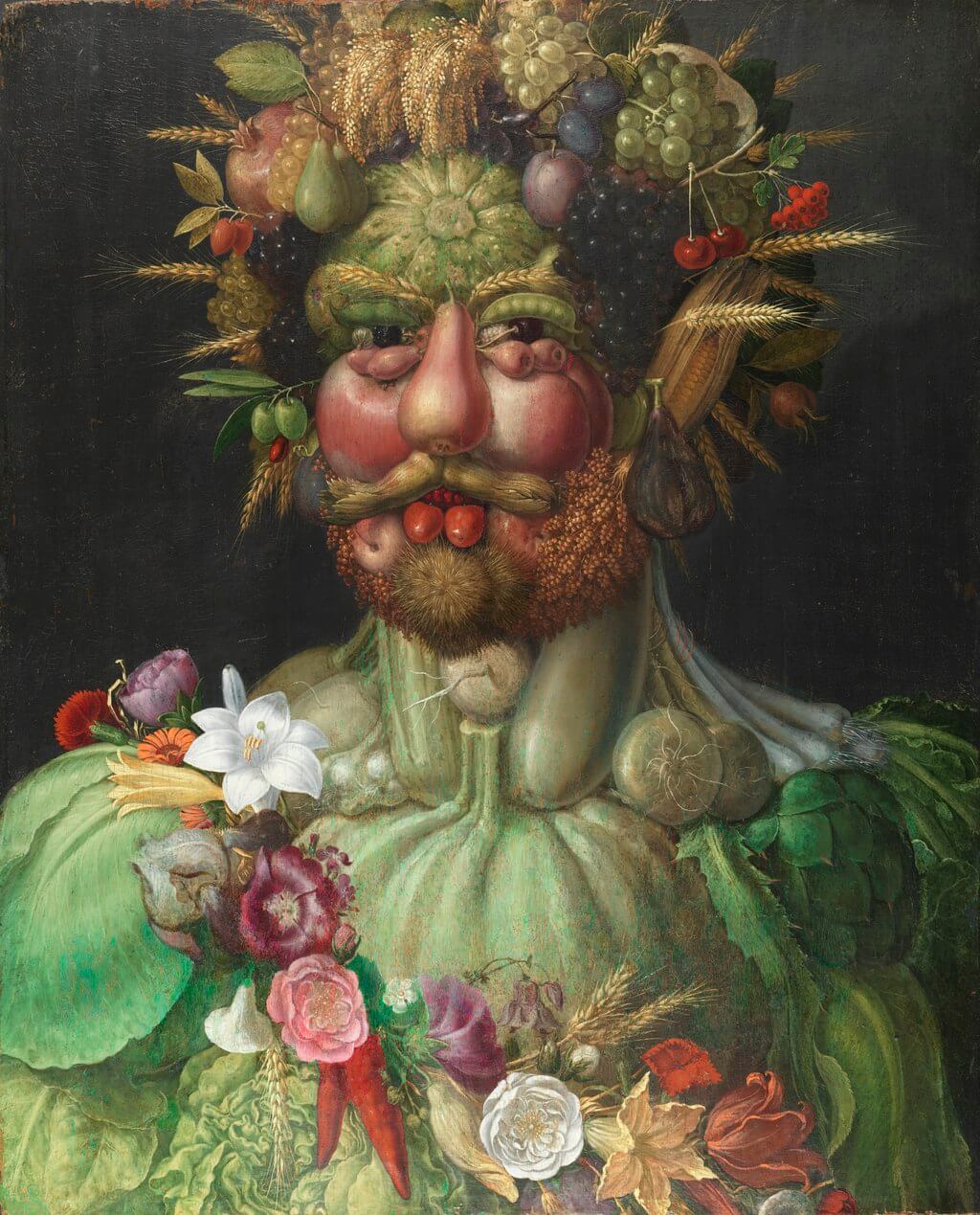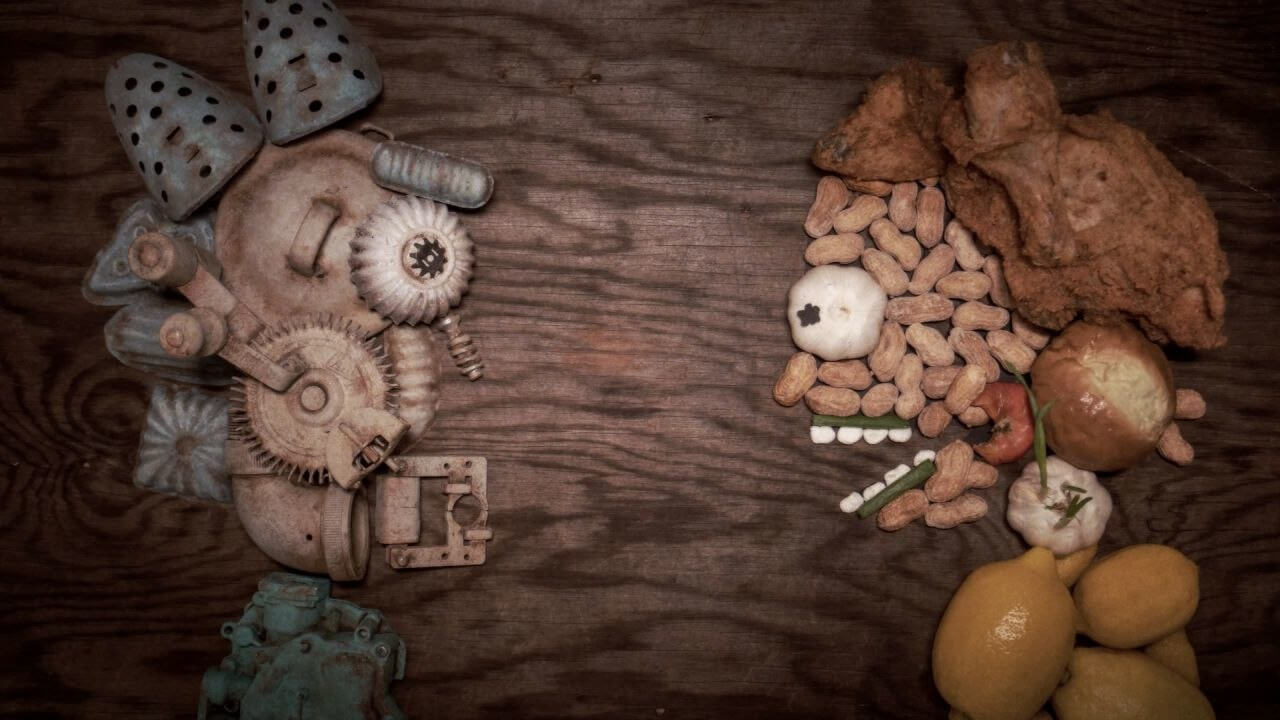Horror for the senses: The art of Jan Švankmajer, master of the uncanny6 min read
Four decades after the appearance of the seminal short film Dimensions of Dialogue (1982), Hanna Hodgetts analyses the works of the retired Czech film-maker and puppeteer, Jan Švankmajer.
Two pieces of raw meat share a ballroom dance together. A moustached man follows an intricate recipe until it becomes clear he is eating his own hand. Or a horrendous-looking tree stump turned baby is being cuddled by his mum. All of these are scenes by the unconventional Czech animator Jan Švankmajer. Once seen, they cannot be unseen.
Both intriguing and horrifying, Švankmajer’s films are a centrepiece of the works by the Czech Surrealist Group, founded in 1938 and the first of its kind outside of France. Though a loyal member of the movement, Švankmajer also developed an immediately recognisable personal style, with animated objects such as scissors and potato peelers dominating the narrative. In 2018, after a productive professional life of more than fifty years, the stop-motion genius retired. Although he remains little known outside of the world of animation, Švankmajer is celebrated by fellow directors as ‘the godfather of animated cinema’, having influenced generations of well-known filmmakers, including Terry Gilliam, the Quay Brothers and Tim Burton.
Švankmajer’s eccentricity has had an ambiguous effect on his popularity. On the one hand, his films are so esoteric or niche that the director experienced major difficulties getting funding for his projects. Consequently, he often resorted to crowdfunding in later years, like in the case of his last film Insects. On the other hand, Švankmajer’s cinema is too eccentric to be forgotten entirely. As Keith Leslie Johnson puts it, ‘he is famous for being obscure [and] seems only too well-qualified for oblivion’; the director’s scenes stick in your mind like images from anxiety-inducing dreams. His hand-made marionettes, clay models and bizarre collages with brushes, pins and ropes wander around in your subconsciousness, only to pop up at unexpected moments. Precisely this enigmatic, dream-like quality contributed to the cult status Švankmajer enjoys amongst certain animators.
Švankmajer never abandoned his background as a puppeteer educated at the Academy of Performing Arts in Prague. The most bizarre puppets populate his films, many of them composites of exotic objects that he collected like a manic Victorian biologist; a monkey’s skull might figure as the head, whilst fins, horns and bones might act as feet and arms, creating a truly hybrid being. His residence in a century forest country house in Czechia is filled with similar otherworldly sculptures and drawings. Švankmajer’s collection of has often been compared to the ‘Wunderkammern’ European aristocrats put together during the 16th and 17th centuries.
 Jan Švankmajer, Bilderlexicon, Zoologie, Tab. 18, collage, 1972 at Moravian Gallery, Brno
Jan Švankmajer, Bilderlexicon, Zoologie, Tab. 18, collage, 1972 at Moravian Gallery, Brno
The director’s cinema can be called physical not only because of his emphasis on materials and exotic objects but also because his images provoke immediate corporeal reactions. His stomach-churning scenes can leave you nauseous and disgusted in a way not dissimilar to Monty Python’s monumental sketch ‘Mr Creosote’; when the character from the short Food (1992) eats his own tie, you start feeling physically unwell. This reaction aligns with the synaesthetic principles as outlined by the Czech Surrealist Group in 1978: ‘to see without looking, to smell without smelling, to hear without listening, to taste without putting anything into your mouth and to feel without touching’. The image is enough to make you ‘feel’ certain things beyond mere emotions, even though all Švankmajer produced is pixels on a screen. This haptic imagination forms the basis of his type of horror, which does not feature any jump scares, creepy clowns or bloody murders, but is far more subtle and inventive.
The third chapter of Dimensions of Dialogue is an interesting example in this respect. Two clay heads face each other, open their mouths and present each other different items: a toothbrush and toothpaste, bread and butter, a shoe and shoelaces. At first, the right combinations are made; toothpaste is put on the toothbrush, butter is spread on the bread and the shoelaces are properly tied. What follows is a chaotic game of rock, paper, scissors; toothpaste is put on the bread, butter is spread on the shoe and the shoelaces are tied around the toothbrush. This makes us physically uneasy, partly because of the haptic memory described earlier – you can almost taste toothpaste on bread in your mouth – and partly because it goes against rules you have been taught as a small child – the toothpaste goes onto the toothbrush and the butter on the bread.
As much as it is absurd, the whole scene is highly unsettling. Clearly, no effort is made to please the audience. In fact, Švankmajer is one of those rare film-makers who remained true to an anti-consumerist, ‘l’art pour l’art’ kind of mindset, where the wishes of the public are in no way taken into account: “I approach all my work, whether it is a film, a collage, or anything else, as a form of self-expression. So you have to be absolutely authentic, you can’t be thinking about if the audience will like and understand the film.”
A self-labelled ‘militant surrealist’, the director remained faithful to the movement’s literary and poetic roots in the works of André Breton and Guillaume Apollinaire until the very end of his career. With them, he shares an admiration for the – equally eccentric – sixteenth-century Mannerist painter Guiseppe Arcimboldo celebrated for his paintings of imaginative portrait heads. His influence can clearly be detected in the first chapter of Dimensions of Dialogue, where one figure, composed of fruit and vegetables, faces another figure, consisting of kitchen utensils. The two figures clash several times, which in turn symbolises the incapacity of human beings to have meaningful conversations. This particular scene by Švankmajer went on to inspire the animators of Rick and Morty, who parodied the scene in a promotional video, which constitutes the last step in a cycle of inspiration and creation that spans several centuries.



Vertumnus by Guiseppe Arcimboldo, still from Dimensions of Dialogue Chapter 1 by Švankmajer and still from the promotional video for Rick and Morty season 4
The creators of Rick and Morty are by no means the only animators inspired by Švankmajer. Monty Python member Terry Gilliam has been outspoken about the influence Švankmajer had on his personal artistic development, admitting at a film festival in 2006 that ‘Jan’s films surprise me again and again. He takes me – and you – on a journey through the mind and the heart. As well as the stomach and the arse. Places you have never been before.’ So, if you are watching the new blockbuster by Gilliam or Burton, keep in mind that both, to some extent, stand on the artistic shoulders of this Czech puppet maker. Švankmajer’s legacy lives on and even though his cinema requires a sturdy stomach and would not necessarily be lauded for its beauty or elegance, his films are worth cherishing. They develop an alternative type of horror, which triggers all five senses. They are also a testament to a rich imaginary world, where two pieces of raw meat can waltz, a tree stump can cry and vegetables can be caught in deadly battle with kitchen utensils.



